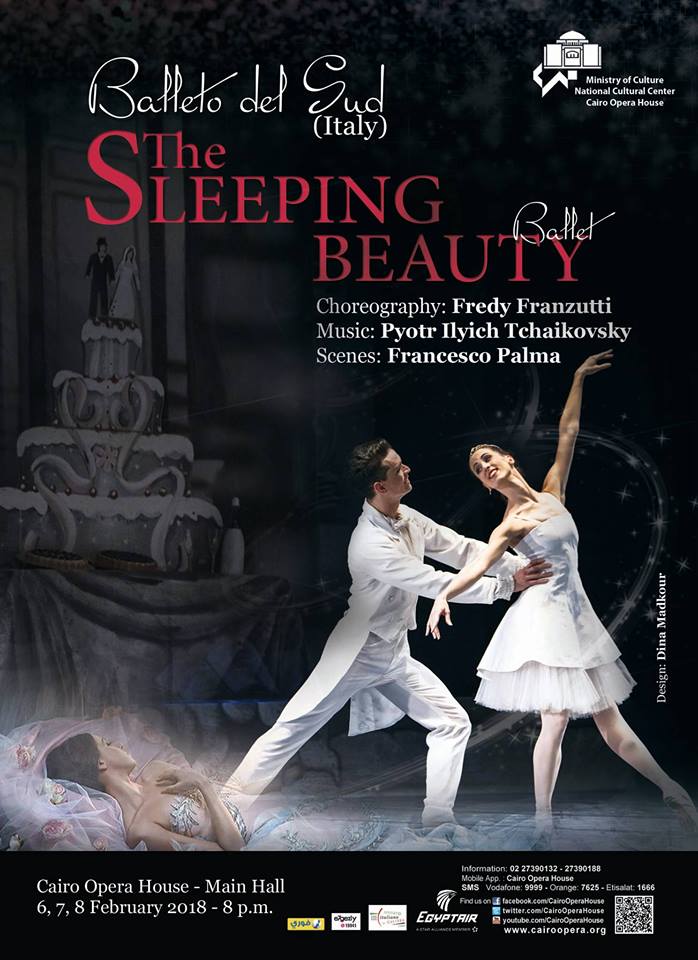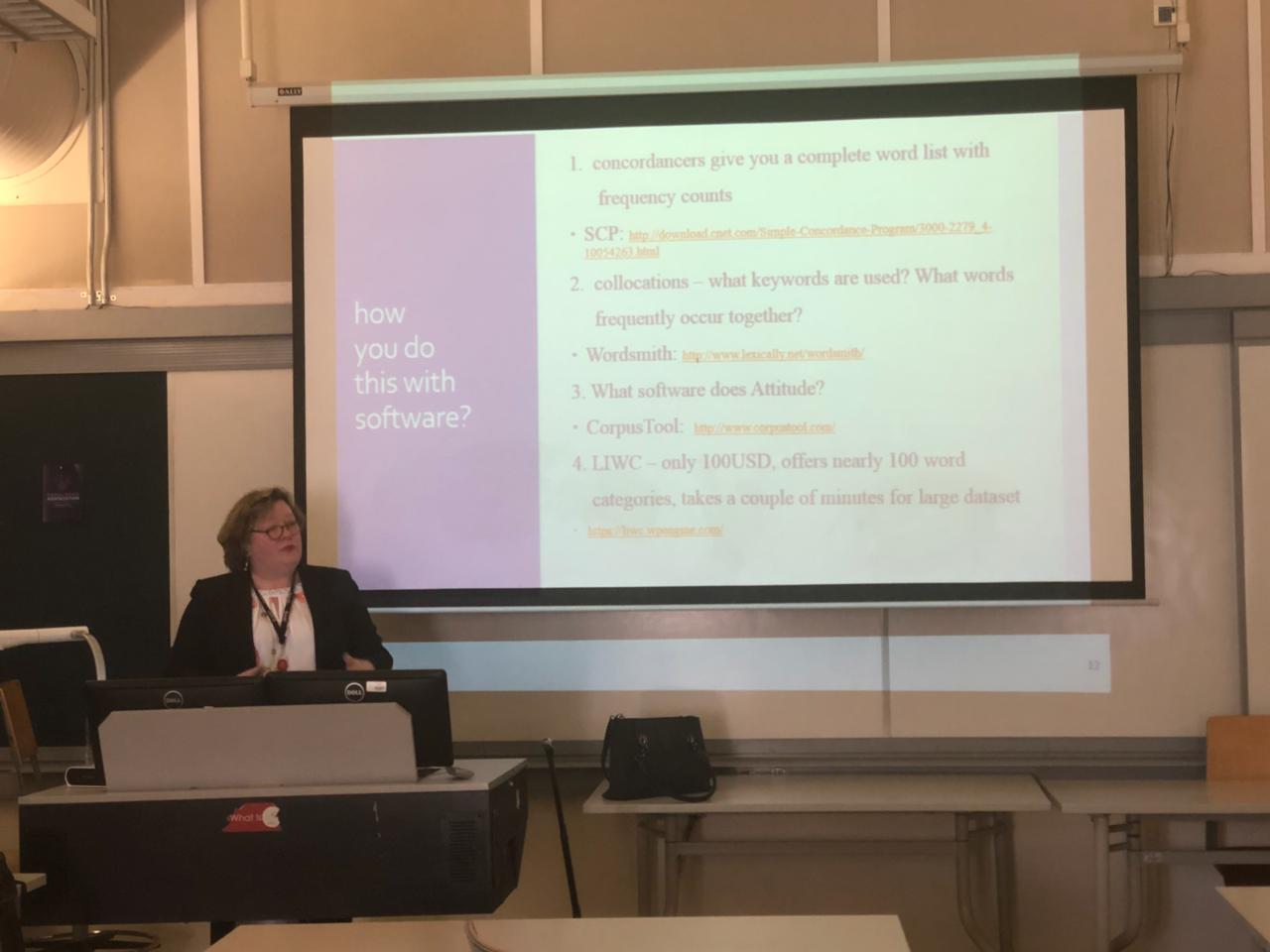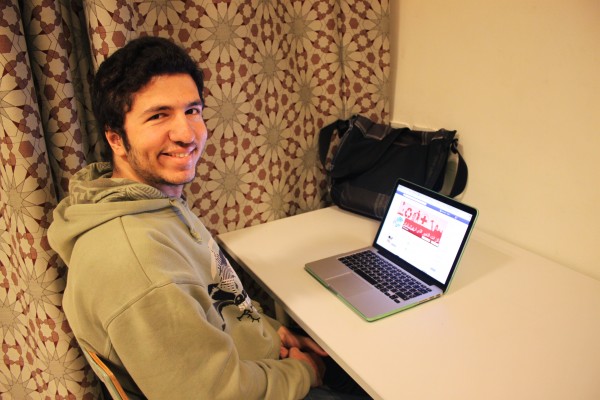Sleeping Beauty: Spiders and Disco Galore!
By Malak Nour
In Fredy Franzutti’s reimagined The Sleeping Beauty, Princess Aurora is stung by a spider instead of pricking her finger on the infamous spindle, while her prince charming is none other than an anthropologist discovering the phenomenon of the sleep-inducing stings.
Performed by Baletto del Sud in collaboration with the Italian Cultural Institute at the Cairo Opera House last week, Franzutti has brought the audience his modernized rendition of Charles Perrault’s fairy tale classic.
Franzutti is the choreographer and founder of Baletto del Sud, which started in 1995, and has a repertoire of around 30 productions including The Nutcracker and Swan Lake, and modern ones, like The Bird of Fire and Oedipus Rex. It is now one of the most popular dance companies in Italy.
Franzutti’s retelling of the fairy tale follows the plot of Perrault’s Sleeping Beauty, but also draws from Italian poet Giambattista Basile’s Sun, Moon, and Talia on which Perrault’s story was based.
In Franzutti’s spin, Nuria Salado Fuste played the role of princess Aurora – a young Mediterranean girl from Southern Italy.
Fuste delivered an elegant performance that was full of vibrance and confidence and, along with her anthropologist-prince played by Tsetso Ivanov, drove the plot toward a happy ending with a cheery youthful couple.
The stunning wedding scene where the bride and groom were showered with glowing silvery confetti, as they kissed in the midst of family and friends, spoke to this dreamy finale.
But such an ending followed the tragic event that took place earlier on the young princess’s 16th birthday where she was bitten by a Salento tarantula in tandem with evil sorceress Carabosse’s prediction.
With the help of the Lilac Gypsy and the young prince’s kiss, however, her destiny was indeed reversed and she was woken from her centenary sleep.
Surprisingly, Aurora’s parents completely steal the show here.
Dancers Carlos Montalvan and Beatrice Bartolomei made a charmingly light-hearted couple who never fail to draw a smile on the audience’s faces each time they appeared on stage.
From Montalvan’s following little Aurora with dolls on stage to Bartolomei’s grande battement derriere as she pushed the baby princess’s pram, the warmth of their performances was quite heartfelt.
Montalyan was particularly charismatic with his humorous, playful portrayal of Aurora’s father.
Actor Andrea Sirianni’s evil witch Carabosse had a significantly strong presence on stage with her dynamic, bold, facial expressions and unrushed body language.
Sirianni’s character provided a very interesting contrast to that of Monica Vert’s Lilac Gypsy whose movements were markedly nimble and delicate, creating a visual dichotomy between good and evil.
What set apart this production by Franzutti were the little modern twists he inserted all throughout the performance.
The replacement of the classic spindle with the Salento tarantula, and the casting of an anthropologist-prince served mostly as an exciting premise that perhaps was not as apparent in the actual performance as it was in its description.
However, there were many other details that definitely made the show.
The princess’s 16th birthday party, just before the arrival of Carabosse with her unfortunate gift, centers around a brief scene with a disco ball complete with glittering blue lights dominating the stage.
What seemed like 1970’s dance moves were fused with the dancers’ performances in a spirit of sheer fun and liveliness.
In another scene on the wedding day of the prince and princess, the princess’s father rocked an air guitar move in a gesture typical of his charismatic character.
Most notably, evil witch Carabosse herself joined the party towards the very end of the performance having come to a reconciliation with the happy couple, and even managed to catch the bride’s flower bouquet! There couldn’t have been a better twist to end this playful rendition with.
The costume design played a huge role in establishing the production’s lively and energetic spirit, especially when it came to the party scenes.
During Aurora’s birthday, the stage was transformed into a palette of different shades of pink and magenta with only Aurora breaking the pattern in a delicate blue dress.
The mother wore a polka-dotted dress of bold magenta and blue, and the father wore a waistcoat of the same bold magenta along with a dashing pair of Wayfarer style glasses.
This on-stage play with color and style was very complimentary to the production’s general ambiance and helped pave the way for Franzutti’s multiple creative twists to the original plot.




